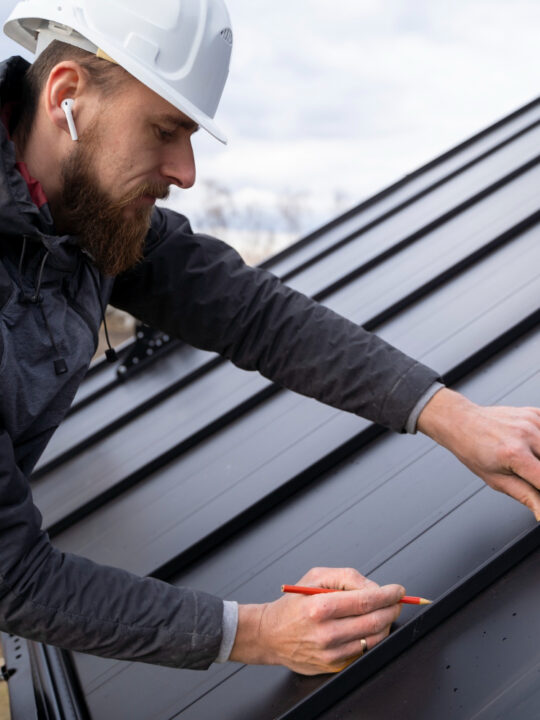 It is essential to provide efficient and safe infrastructure during road maintenance. In most circumstances, road work zones are situated near traffic, leaving inadequate space for motorists. This is a potential for accidents to both road workers and users.
It is essential to provide efficient and safe infrastructure during road maintenance. In most circumstances, road work zones are situated near traffic, leaving inadequate space for motorists. This is a potential for accidents to both road workers and users.
Therefore, it’s vital for construction companies, work environment specialists, and road authorities to minimalize the risks of accidents happening. Despite efforts to improve road safety, accidents in the work zone have remained a frequent occurrence.
Table of Contents
What Are Some Major Requirements in Work Zones?
- Mobility rule and work zone safety
- Temporal traffic preventive devices
- Manual on Uniform Traffic Control Devices (MUTCD)
What Are the Challenges Experienced in Work Zones?
- Incident management
- Lack of coordination
- Variations in the traffic pattern
- Road user safety and workers
- Delay and work zone congestion
- Travel and alternative route availability
- Speed reduction and roadway capacity
- Day and nighttime situation visibility/awareness
Management Strategies for Road Construction in Work Zones
America’s infrastructure and roads have begun hurtling and aging and more drivers are hitting the roads. Therefore, states have embarked on constructing more roads to ensure efficiency and security to the pedestrians and motorists; however, they are beginning to feel a pinch due to a shrinking workforce and tighter budgets.
A safety management strategy for controlling construction traffic will reduce the chances of accidents happening and help motorists arrive at their destinations without delay.
Let’s improve our roads’ efficiency and safety by employing the following strategies to manage work zones:
1. Mange Surge in Traffic
Construction workers’ most significant risk is to encounter a surge in flow of traffic. Ensure the road is safe for workers and drivers by considering the following:
- Use much lighting, barricades, and traffic cones to separate workers and the traffic
- Create a bumper space to separate equipment and workers from oncoming traffic
- Mark the area where work zones start and end, so motorists know when to put extra care
- In situations where workers and equipment significantly hamper traffic flow, redirect to bypass
Enforce proper traffic control equipment to alert drivers to be on the lookout, and to manage the movement of traffic in active construction zones
2. Personal Protective Equipment
A road worker faces a risk of injury in the work zone. To prevent injuries from happening, it’s always essential to put on proper safety equipment while working. These are personal protective equipment (PPE) which includes hearing protection, hard hats, steel-toed boots, and high visibility clothing.
3. Make Your Worksite Safe and More Efficient.
In a road infrastructure project, on-going construction works can be hazardous. You must ensure that you and the team members remain vigilant and that construction equipment is safe from oncoming traffic. Sick or weak individuals should not be included in work zones.
4. Select a Site-Specified Safety Program
A road infrastructure project is characterized by conditions that may vary according to challenges and unique hazards in the work zone. To reduce the risk of accidents happening, you require a safety program that meets each site’s characteristics, which include:
- First aid preparation and emergency plans
- Plans to mitigate and control potential risks
- Emergency medical care availability, in case of accidents
- Security training schedule program for the employees
- Schedules to ensure material and equipment inspection throughout the construction period
- Identification of hazards, such as oncoming traffic, pedestrian walkaways, and power lines
Not only should you have a safety program in construction projects, but you should ensure your team has a safety plan on the weather, the surrounding, etc.
5. Begin Your Day with a Safety Assembly Team
Safety emphasis in the work zone provides a focus for each worker’s accident preparation. Start each day with a training session to give instructions on the required skills for safe road construction.
The assembly is also beneficial for the team since they discuss and review the day’s events.
Prior-work meetings help strengthen team efforts and ensure the project runs efficiently.
Although some workers may not take these meetings seriously, the fact is that assembly fosters unity in enforcing a safer work surrounding that deters accidents and reduces hazards.
6. Appoint Job Site Security Officer
For any project to run smoothly, it requires that there be a highly responsive leader to perform intensive activity supervision on the job site and to ensure workers’ safety.
Worksite also requires health and safety administration, thus selecting an individual who will identify and eliminate all site dangers or hazards.
The work zone environment should be regularly inspected to identify and eliminate the possible risk of accidents occurring.
Other Traffic Preventive Measures
It’s vital to consider other Traffic Control Measures in work zones to minimize the risk of motorized traffic intrusion into the worksite. These measures include:
- Intrusion alarms
- Drone radar
- Worker training
- Law enforcement
- Pilot or pace vehicle
- Credible, effective signing
- Space reduction channel device
- Improved flagger station systems
- Warning lights and flags on signs
- Variable message signs
- Removal of deceptive markings and high-quality pavement work zone
- Automated speed implementation (permitted by local laws/State)
- Speed management of the work zone (including regulatory speed limit variations)
- Longitudinal channel barricades
- Temporal traffic signals
- Work equipment/vehicle and worker visibility
- Traveler and public information
Exposure Control Measures
It would help if you considered Exposure Control Measures where applicable to reduce or avoid worker exposure to motorists’ activities. Some measures appropriate to ensure worker safety against motorists include:
- Ramp closures
- Median crossovers
- Full road closures
- Accelerated construction procedures
- Operation removal by roadblocks and work zone protection setup
- Working during off-peak periods or at night when traffic volume is low
You can have a look at the American Society of Safety Professionals to learn more ways to create a safer work zone, which include:
- Cultivate a traffic control plan. This tackles four key areas: translation, termination, activity, and warning
- Deploy protective safety measures
- Enhance worker visibility
- Employ vigilant intrusion technologies
At WorkSafe Traffic Control Industries, we understand the importance the utmost importance of safety in work zones. We manufacture exceptional traffic safety signs and supplies which can be programmed to show any message of your choice. The signs can be used in any location.
We work directly with public, federal, private, and legislative clusters to endorse extraordinary benefits to secure lives on our highways. By always paying attention to detail, we’ve met and exceeded our client’s expectations.
You can call us today at (603) 224-0888 for more information. Your safety is our command.
For safer construction work zones, reliable, and more efficient construction roads, you should employ the above-discussed strategies. Work zone management needs to balance mobility, safety, and constructability. However, note that work zone safety depends on everyone’s keenness on the worksite.







